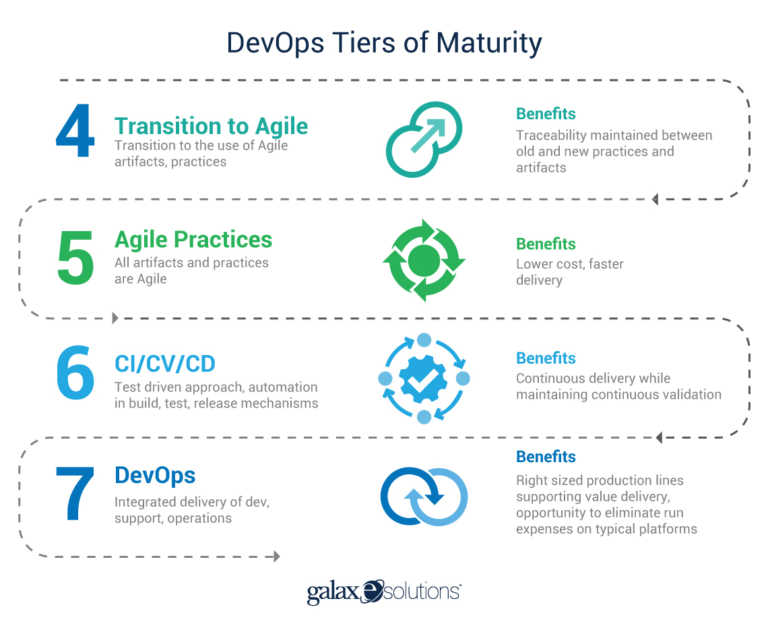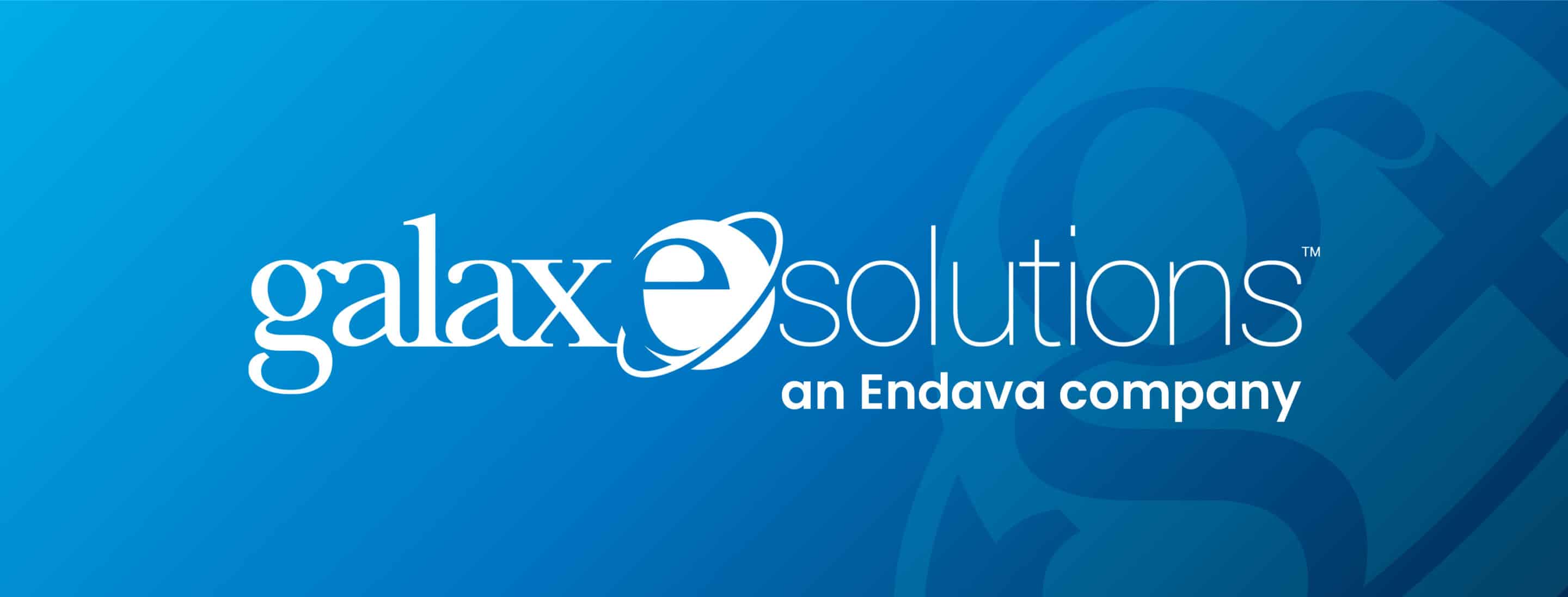In order to be truly effective, DevOps relies on Continuous Delivery (CD), which, in turn, requires Continuous Integration (CI). The release of incremental software changes needs not only automated release mechanisms, but also testing, code quality, security and privacy controls, and validation steps. For organizations in a highly regulated environment such as healthcare, however, validation must be taken a step further through the process of Continuous Validation (CV). This blog is more about true DevOps and where the rubber hits the road.
GalaxE can help you benchmark your current DevOps maturity and has provided a roadmap to reach your full potential. The first four tiers are:
Tier 0: Traditional Waterfall
Tier 1: Iterative Waterfall
Tier 2: Early Reviews, and
Tier 3: Agile Team
Let’s take a look at the final four tiers:

Tier 4: Transition to Agile – As an organization transitions toward agile artifacts and practices, the day-to-day duties of personnel will change. Team members will incorporate more QA measures to test the performance of their software as it is being developed, such as a focus on “Defined as Ready” (DoR) and “Defined as Done” (DoD).
Tier 5: Agile Practices – The team completes the transition of any legacy artifacts and processes until they are all agile. The development team collaborates closely with business stakeholders to deliver frequent, usable versions of the product. Teams then use the knowledge they acquire to fix mistakes they’ve found and to build on the previous version.
Tier 6: CI/CV/CD (Continuous Integration/Continuous Validation/Continuous Development) – This is a proactive, test-driven approach that uses automation in build, test, and release mechanisms to ensure continuity and accuracy. Process tools such as test-driven development (TDD) and software mapping are used to create a series of specific test cases. Each step is integrated into the software, validated, and then used to develop the next iteration.
Tier 7: DevOps – DevOps emphasizes automation and monitoring during all steps of software development, from integration through validation and deployment. Through this approach, DevOps aims to create shorter development cycles, increase deployment frequency, and deliver more dependable releases to meet business objectives. This process allows for more frequent releases in order to “fail faster,” resulting in more dependable software.
What’s different about the GalaxE approach is the capabilities of our enablement tools GxMaps™, GxDash™, and GxQuality™, which are a natural progression from QA automation. Once integrated, these tools enhance redundancy, diversity, reliability, and fault tolerance at the highest of levels. Integrating these solutions into your business is essential for efficient adaptation to shifting markets, regulation, and customer demands. Without them, businesses risk being outpaced by the competition.
Learn more about GxMaps™ application dependency mapping software and how it can help you achieve DevOps environments here.







